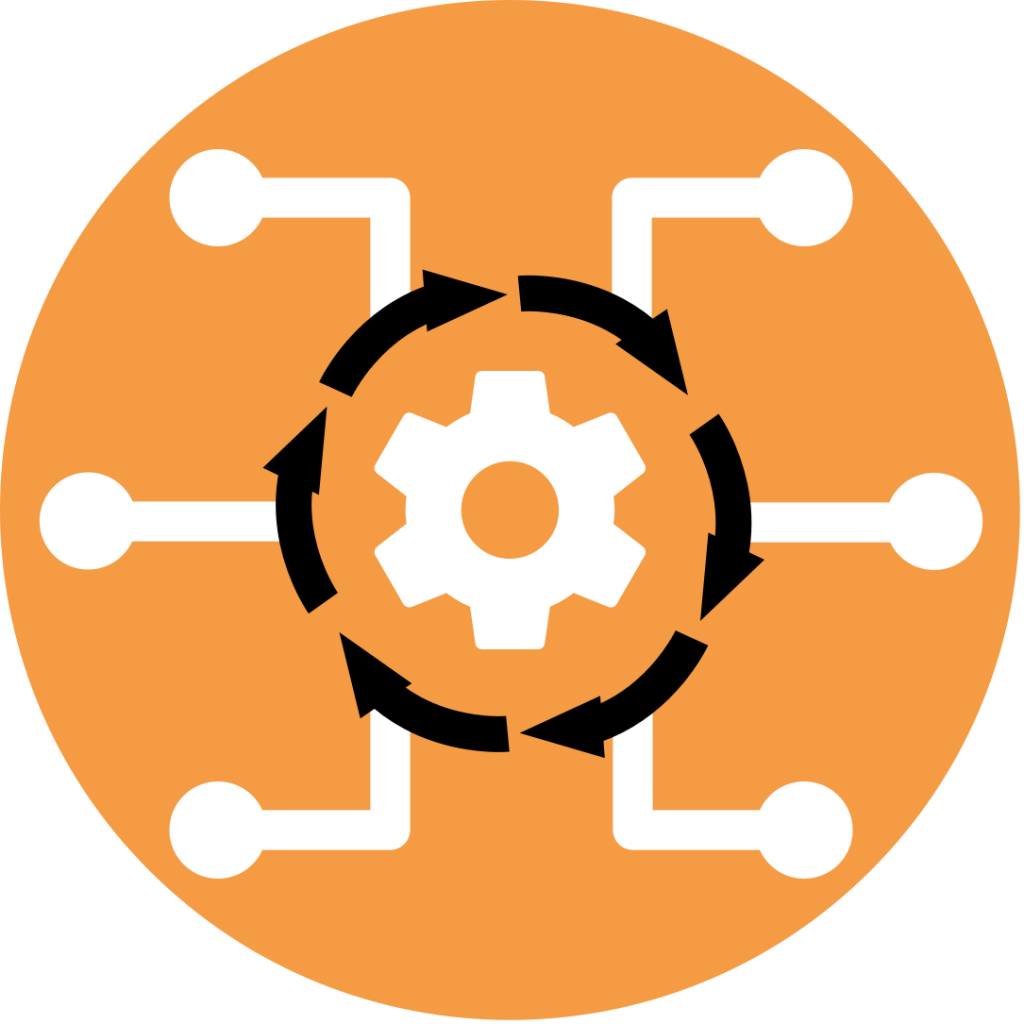Resources
Publications

White papers
Unleashing personal health data for care and research: The InteropEHRate approach – White Paper
InteropEHRate aims to unleash health data from local silos and offer more power to citizens in managing their own health data across different health providers and countries, facilitating care and accelerating health research. Read in this White Paper how to enable a citizen-centric approach and what technical solutions is InteropEHRate developing.
Real-world evidence in health and care research: The contribution of InteropEHRate – White Paper
The importance of real-world data in health and care is coming to the fore. The InteropEHRate vision for collecting data for research is to enable citizens to share health data with research centres without a direct intermediary and directly from their own smartphone. This White Paper presents the InteropEHRate research platform composed by the research data sharing protocol, InteropEHRate Research Services and a reference implementation, and how research institutions benefit from these solutions.
Towards interoperable health data: The contribution of InteropEHRate – White Paper
Health data exchange across institutions, regions, and countries in Europe is challenging. This new White Paper provides an overview of the problems of data heterogeneity and interoperability and presents a solution based on an in-depth and exhaustive analysis of data, made possible through innovative semi-automated methodologies and tools developed in the framework of the InteropEHRate project. It also shows how these tools and methods were applied in complex clinical and research scenarios requiring cross-border data interoperability.

Presentations
Midterm Public Workshop October 2020 – Part 2 InteropEHRate Architecture, protocols and APIs
Towards an open European EHR sharing process InteropEHRate project partners jointly develop open interchange protocols supporting patient-centred exchange of health records between patients, healthcare actors and researchers. We welcomed stakeholders, experts and industry to debate this and future plans. Day 2 presentations cover the overall approach, InteropEHRate protocols and semantic mapping.
– Architecture for decentral health data sharing
– InteropEHRate D2D Protocol
– InteropEHRate R2D Access | Cloud | Emergency Protocols
– InteropEHRate RDS [Research Data Sharing] Protocol
– InteropEHRate Semantic Mapping Tools
Midterm Public Workshop October 2020 – Part 1 InteropEHRate Scenarios and Data flows
InteropEHRate “Interoperable EHRs at user edge” helps to pave the way towards an open European EHR sharing process. Project partners jointly develop open interchange protocols supporting patient-centred exchange of health records between patients, healthcare actors, and researchers. We welcomed stakeholders, experts, and industry to see our first results with demos and to debate this and future plans. The presentations cover the EC overview, the overall approach and the basic scenarios.
– Health data sharing in Europe strategies and implementation
– Overview of InteropEHRate
– Access to patient data at the point of care LIVE DEMO
– Decentralised data sharing for research
– Access to patient data in emergency situations
– Synopsis – key features and added value of the InteropEHRate approach
InteropEHRate project overview presentation
The InteropEHRate project is funded by the European Union for 42 months and is implemented by a unique consortium of experienced institutions and qualified experts. InteropEHRate partners represent healthcare solution providers, hospitals, universities, and research centres, as well as European and local stakeholder associations.
Our key goal is to complement and integrate the current interoperability infrastructures with new technologies for health data exchange centered on the person, based on a bottom-up approach that does not require coordination by a superior authority and that leaves more control of health data to the people.
The slideshow here linked gives an overview of the project’s aim, vision, and technical approach and is designed for the general public
InteropEHRate presentation at the HL7 Hellas meeting
On 25th September 2019, the project InteropEHRate was presented by Theodora Zacharia, scientific advisor of the Athens Doctors Association, partner of the InteropEHRate Consortium, at the HL7 Hellas meeting held in Athens, Greece. Technical and semantic interoperability aspects of InteropEHRate technical approach were described and discussed, against the backdrop of the three user case scenarios: device-to-device temporary sharing, emergency, and research access. Technical components include the Smart Electronic Health Record (S-EHR) mobile app and cloud, the healthcare providers web app, and the InteropEHRate Health and Research services.
This presentation available at the link above – is published for the time being, only in the original language (greek).
InteropEHRate ESB Meeting, November 2019
This set of slideshows on the InteropEHRate project was presented during the first External Stakeholder Board (ESB) meeting hold in Berlin, Germany, on November 7th, 2019. The sideshows cover the basic aspects of the project technical solution and achievements ten months after its starting:
– Year one architecture and framework
– Scenarios and users requirements
– HR Interoperability Protocols
– Security and Privacy Protocols

Videos
Exploitation of InteropEHRate solutions:
InteropEHRate Mid-term Public Workshop | Part 1
InteropEHRate Scenarios and Data Flows (20 October 2020)
Access to patient data at the point of care (Live Demos):
- Health records for patients (Vincent Keunen)
- Retrieve data from the hospital (Vincent Keunen)
- Local communication (Adrian Bradu)
InteropEHRate Mid-term Public Workshop | Part 2
Architecture, protocols and APIs (21 October 2020)

Other publications
Towards an incremental approach to let citizens master the access to and the use of their health data via Interoperable EHRs
EHTEL members welcome the recent initiative of the European Commission towards a Recommendation to establish a Format for a European Electronic Health Record (EHR) Exchange. It aims to facilitate cross-border interoperability and secure access to electronic health records for seamless exchange and use of health data in the EU.
InteropEHRate project flyer – 1st version
InteropEHRate project flyer is a printable document designed to raise public awareness about the project goals, technical approach, and expected results. It conveys the key messages of InteropEHRate to a wide range of audiences encompassing from the health and technology sector to policy-makers and the general public. Although the main audience will be participants of technical and health sector related conferences, addressing multiple audiences requires an additional effort to express in lay language the various technical aspects of the project.
InteropEHRate External Stakeholder Board – Member list (Biographies and social media)
Members of the InteropEHRate External Stakeholder Board (ESB) represent end-user representatives (patients, health professionals) as well as high-level experts – in particular from the standards and interoperability domain (the list reflects the member status as of November 2019 – first formal ESB meeting in Berlin).
InteropEHRate project flyer in Greek – 1st version
InteropEHRate project flyer printable document greek translation.
Deliverables

Requirements
D6.3 – Software requirements and architecture specification of a S-EHR – V3
Fundamental technical results of InteropEHRate will be composed of two aspects. The first one will be a set of open specifications, implementable by any vendor or institution. The second technical result will be a reference implementation composed of reusable software components, which will implement the specifications and will be interoperable with any other implementation of the same specifications. This document focuses on the requirements and the reference implementation of one of the components; the S-EHR mobile app (S-EHR-A). This document provides architecture specifications, screens and screen mock-ups, description of workflow and technology used for the S-EHR-A.
D5.3 – Software requirements specification of an integrated EHR web app for HCP – V3
This deliverable, which is the updated version of deliverable D5.2, aims to present the new functionalities and features of the integrated web app – Healthcare Professional Application (HCP App). This updated version of software requirements specification of HCP-App is the result of both – technical improvements and software development and the continuous collaboration with the final users (co-design / co-creation sessions).
For a suggestive overview of the updated version of HCP-App and further development, two different sections were created in the document, namely: Features implemented into version 2 and Features that will be implemented in version 3 of the application.
D2.3 User Requirements for cross-border HR integration
This report describes the final version of users’ requirements of the applications that are constrained by the InteropEHRate open specification and of the additional applications that are part of the InteropEHRate (software) framework. These include, in particular, the definition of clinical content to be supported by a S-EHR, needed to deal with the different reference scenarios. The results of the third cycle of focus groups are also reported, including suggestions and comments on functionalities and user interfaces belonging to the InteropEHRate framework, in the three different categories: patients and family caregivers, healthcare professionals, clinical researchers.
D5.2 – Software requirements specification of an integrated EHR web app for HCP – V2
This deliverable, which is the updated version of deliverable D5.1., aims to present the new functionalities and features of the integrated web app – Healthcare Professional Application (HCP App). The updated version of the software requirements specification of HCP-App is the result of both technical improvements and software development and the continuous collaboration with the end-users (co-design / co-creation sessions). For a suggestive overview of the updated version of HCP-App and further development, the document includes a section for version 1 and a section for version 2 of the application.
D6.1 – Software requirements and architecture specification of a S-EHR – V1
The fundamental technical result of InteropEHRate will be composed of two aspects. The first one will be a set of open specifications, implementable by any vendor or institution. The second technical result will be a reference implementation composed of reusable software components, which will implement the specifications and will be interoperable with any other implementation of the same specifications. This document focuses on the requirements and the reference implementation of one of the components; the Smart-EHR mobile app (S-EHR-A).
D2.1 – User Requirements for cross-border HR integration – V1
This report describes the final users’ requirements of InteropEHRate platform, including the initial definition of clinical content for S-EHR, the description of three different reference scenarios where S-EHR is applied and the methodology applied to refine final users requirements according to the three different final user categories: patients and family caregivers, healthcare professionals, and clinical researchers. Refinements and evolution on the clinical definition of S-EHR content and reference scenarios descriptions will be reported in the forthcoming version of this deliverable.
D5.1 – Software requirements specification of an integrated EHR web app for HCP – V1
This deliverable assumes the elaboration of preliminary software requirements and the design of the integrated web app Healthcare Professional Application (HCP app) used by healthcare professionals for creating and accessing health data of foreign patients, based on user requirements specified in Work Package 2 Architecture for cross-border HR integration and continuous collaboration with the final users. Healthcare Professional Application will exploit the Device to Device and remote protocols defined in Work Package 4 HR Interoperability Protocols for implementing the following functionalities: (i) import/export data directly from/to the Smart-Electronic Health Record (S-EHR) mobile application on the smartphone, (ii) import/export data from/to S-EHR cloud and (iii) access integrated health records imported from Electronic Health Records (EHRs)/Electronic Medical Records (EMRs) of other healthcare providers.
D2.2 – User Requirements for cross-border HR integration-v2
This report describes the second version of the final users requirements of InteropEHRate platform and related open specifications. It includes the initial definition of clinical content to be supported by an S-EHR, expressed in three different reference scenarios. The results of the second cycle of focus groups are also reported, including suggestions and comments on InteropEHRate functionalities and user interface, in the three different categories: patients and family caregivers, healthcare professionals, clinical researchers.
D6.2-Software requirements and architecture specification of an S-EHR – V2
Fundamental technical results of InteropEHRate will be composed of two aspects. The first one will be a set of open specifications, implementable by any vendor or institution. The second technical result will be a reference implementation composed of reusable software components, which will implement the specifications and will be interoperable with any other implementation of the same specifications. This document focuses on the requirements and the reference implementation of one of the components; the S-EHR mobile app (S-EHR-A). This document provides architecture specifications, screens and screen mock-ups, description of workflow and technology used for the S-EHR-A.

EU interoperability protocols and open specifications
D2.6 – InteropEHRate Architecture – V3
This report describes a novel architecture for citizen-centred EHR interoperability and provides an overview of its reference implementation. This is the third and final version of the specification.
The “InteropEHRate standard architecture” specifies how different actors using applications offered by different vendors may interoperate for exchanging health data (coming from an EHR or from the person), thanks to open (vendor independent) communication protocols. This document also provides an introduction to the “InteropEHRate framework”, a reference implementation of the standard architecture. The InteropEHRate framework provides a concrete example of the implementation of the elements of the standard architecture and also includes additional components to support their usage. A more detailed description of each protocol and software component is described in referred deliverables that complement the present one.
D3.8 – Specification of consent management and decentralized authorization mechanisms for HR Exchange – V2
This deliverable provides the second and final version of the specification of consent management and decentralized authorization mechanisms for health records in InteropEHRate. This document also provides a detailed technical background for consent management, authorization and blockchain mechanisms, including other relevant projects, which is a necessary step to move forward. The deliverable includes the consent management and authorization aspects of all the involved architecture components (e.g., S-EHR App, HCP Web App, S-EHR Cloud, Central Node and Reference Research Center), protocols (e.g., D2D, R2D Access, R2D Backup, R2D Emergency, RDS), and scenarios (e.g., Medical Visit, Emergency and Research) for HR exchange.
D3.4 – Specification of remote and D2D IDM mechanisms for HRs Interoperability – V2
This deliverable provides the second and final version of the specification of remote and D2D Identity Management (IDM) including authentication mechanisms in InteropEHRate. This document also provides a detailed technical background for IDM and authentication mechanisms, which is a necessary step to move forward. The deliverable includes the IDM and authentication aspects of all the involved architecture components (e.g., S-EHR App, HCP Web App, S-EHR Cloud, and Reference Research Center), protocols (e.g., D2D, R2D Access, R2D Backup, R2D Emergency, RDS), and scenarios (e.g., Medical Visit, Emergency and Research) for HRs interoperability.
D3.6 – Specification of data encryption mechanisms for mobile and web applications – V2
This deliverable provides the second and final version of the specification of protocols for encryption mechanisms for both health data storage and health data exchange. This document also provides a detailed technical background for encryption mechanisms, which is a necessary step to move forward for both data in transit and data at rest. The deliverable includes the encryption aspects of all the involved architectural components (e.g., S-EHR App, HCP Web App, S-EHR Cloud, and Reference Research Center), protocols (e.g., D2D, R2D Access, R2D Backup, R2D Emergency, RDS), and scenarios (e.g. Medical Visit, Emergency, and Research) for data at rest and in-transit.
D4.9 – Specification of protocol and APIs for research health data sharing – V2
This deliverable provides specifications for the Research Data Sharing (RDS) Protocol that governs the process of collecting health data from citizens’ smart health data, contained on their mobile devices, for the purposes of cross-border medical research. The deliverable defines the scope of the protocol within the entire process of setting up and preparing a research study. It also defines the actors involved, the process, as well as the underlying programming interfaces, high-level system components, and data models.
D4.3 – Specification of remote and D2D protocol and APIs for HR exchange – V3
This report describes the third version of the open specification of the device-to-device (D2D) and the remote-to-device (R2D) protocols, defined (and to be experimented) in the context of the InteropEHRate project. These protocols will be used by software applications facilitating health data exchange between the citizens and the Healthcare professionals. The D2D protocol defines the technology, data structures and operations to be offered by the interacting applications, allowing the exchange of health data between the aforementioned stakeholders without the usage of the internet. On the other side, the R2D protocols – consisting of the R2D Access, R2D Emergency, and R2D Backup protocols, define the technology, operations, and structure of data used for enabling the exchange of health data between an Electronic Health Record (EHR) system of a single organization (either a National EHR or a S-EHR Cloud (a remote cloud system for the storage of encrypted personal health data)) and the citizen, with the usage of internet.
D8.6 – InteropEHRate Standardization report – V1
The InteropEHRate project aims to use existing and develop new communication standards in healthcare. Interaction with standardization committees is highly relevant for this. The aim of this report is to identify which potential findings and innovations from InteropEHRate could contribute to standards and to identify relevant standardization bodies. A standardization plan is drawn up and all standardization activities are recorded.
D4.8 – Specification of protocol and APIs for research health data sharing – V1
This deliverable provides specifications for the Research Data Sharing (RDS) Protocol that governs the process of collecting health data from citizens’ smart health data, contained on their mobile devices, for the purposes of cross-border medical research. The deliverable defines the scope of the protocol within the entire process of setting up and preparing a research study. It also defines the actors involved, the process, as well as the underlying programming interfaces, high-level system components, and data models.
D2.8 – FHIR Profile for EHR interoperability – V2
This document forms the basis for the technical specifications of the InteropEHRate Profiles. Based on the scenarios defined in the project, relevant data sets are identified. Based on this, a domain model is created. This takes into account existing domain models for cross-border data exchange such as the International Patient Summary (IPS) and extends them. Data objects that have not yet been specified in the IPS are described in more detail with their attributes. The extended domain model forms the basis for the technical specification of the InteropEHRate Profiles with HL7 FHIR.
D2.5 – InteropEHRate Architecture – V2
This report describes a novel architecture for citizen centred EHR interoperability and provides an overview of its reference implementation. The “InteropEHRate standard architecture” specifies how different actors using applications offered by different vendors may interoperate for exchanging health data (coming from an EHR or from the person), thanks to open (vendor independent) communication protocols. This document also provides an introduction to the “InteropEHRate framework”, a reference implementation of the standard architecture. The InteropEHRate framework provides a concrete example of the implementation of the elements of the standard architecture and also includes additional components to support their usage. A more detailed description of each protocol and software component is described in referred deliverables that complement the present one.
D2.4 – InteropEHRate Architecture – V1
This report describes a novel architecture for citizen-centred EHR interoperability and the structure of its reference implementation.
The InteropEHRate architecture specifies how different actors using applications offered by different vendors will be able to interoperate thanks to open (vendor-independent) protocols and APIs.
This document also provides an introduction to the reference implementation, i.e. to the set of software components developed by the project to provide a concrete example of implementation of the open protocols and to support their usage.
A more detailed description of each specific protocol and software component will be described in referred forthcoming deliverables.
D3.3 – Specification of remote and D2D IDM mechanisms for HRs Interoperability – V1
This deliverable provides the first version of the specification of remote and D2D Identity Management (IDM) including authentication mechanisms in InteropEHRate. This document also provides a detailed technical background, which is a necessary step to move forward. The final and more detailed specifications will be provided in the second forthcoming deliverable.
D3.7 – Specification of consent management and decentralized authorization mechanisms for HR Exchange – V1
This deliverable provides the first version of the specification of consent management and decentralized authorization mechanisms for health records in InteropEHRate. This document also provides a detailed technical background, which is a necessary step to move forward. The final and more detailed specifications will be provided in the second forthcoming deliverable on March 2021.
D2.7 – FHIR Profile for EHR interoperability – V1
This document forms the basis for the technical specification of the InteropEHRate Profiles. Based on the scenarios defined in the project, relevant data sets are identified. Based on this, a domain model is created. This takes into account existing domain models for cross-border data exchange such as the International Patient Summary (IPS) and extends them. Data objects that have not yet been specified in the IPS are described in more detail with their attributes. The extended domain model forms the basis for the technical specification of the InteropEHRate Profiles with HL7 FHIR.
D3.1-Specification of S-EHR mobile privacy and security conformance levels – V1
This report addresses the specification of Smart Electronic Health Record (S-EHR) privacy and security conformance levels. The security conformance levels comprise the constraints that an S-EHR mobile app and an S-EHR Cloud have to fulfil to be considered secure, reliable and compliant to privacy requirements. At first cyber-risks and derivation of targets and countermeasures are identified. Beyond that, the legal framework, existing methods and models in the literature, as well as existing tools are analyzed. Based on that, the general methodology for the definition of the security conformance levels from the project perspective is defined.
D3.5 -Specification of data encryption mechanisms for mobile and web applications – V1
This deliverable provides the first version of the specification of protocols for encryption mechanics for both health data storage and health data exchange. This document also provides a detailed technical background, which is a necessary step to move forward.
D4.2-Specification of remote and D2D protocol and APIs for HR exchange -V2
This report describes the second version of the open specification of the device-to-device (D2D) and the remote-to-device (R2D) protocols, defined (and to be experimented) in the context of the InteropEHRate project. These protocols will be used by software applications facilitating health data exchange between the citizens and the Healthcare professionals. The D2D protocol defines the technology, data structures and operations to be offered by the interacting applications, allowing the exchange of health data between the aforementioned stakeholders without the usage of the internet. On the other side, the R2D protocol defines the technology, operations and structure of data used for enabling the exchange of health data between an Electronic Health Record (EHR) system of a single organization, either a National EHR or to an S-EHR Cloud (a remote cloud system for the storage of encrypted personal health data) and the citizen with the usage of internet.

InteropEHRate framework – Design
D2.6 – InteropEHRate Architecture – V3
This report describes a novel architecture for citizen-centred EHR interoperability and provides an overview of its reference implementation. This is the third and final version of the specification.
The “InteropEHRate standard architecture” specifies how different actors using applications offered by different vendors may interoperate for exchanging health data (coming from an EHR or from the person), thanks to open (vendor independent) communication protocols. This document also provides an introduction to the “InteropEHRate framework”, a reference implementation of the standard architecture. The InteropEHRate framework provides a concrete example of the implementation of the elements of the standard architecture and also includes additional components to support their usage. A more detailed description of each protocol and software component is described in referred deliverables that complement the present one.
D6.6 – Design of a S-EHR mobile app – V3
ABSTRACT This deliverable is the description of the third version of the architecture of the Andaman7 mobile application and the integration of protocols into the application.
This deliverable is confidential (accessible only by the Consortium and EC).
D6.8 – Design of a mobile service for data anonymization and aggregation
This deliverable refers to the data anonymization and aggregation services provided by the InteropEHRate framework. These services aim at anonymizing or pseudonymizing a citizen’s health data before being sent to researchers for research purposes. The deliverable points to the basic concepts related to personal data, and to the measures which will be implemented in order to protect this data. In addition, this document provides a description of the scenario that the libraries for anonymization and pseudonymization will be utilized, and finally, the design and implementation of the library for the anonymization and pseudonymization of the health data on the mobile.
D6.7 – Design of a service for cloud storage of S-EHR content (S-EHR cloud)
This deliverable describes the design of the optional S-EHR Cloud service proposed and offered by the InteropEHRate Framework, which can be used by citizens in order to backup their health data safely on the Cloud, while allowing authorized Healthcare Professionals to access this data when needed in emergency situations. This deliverable presents the thorough research that was conducted prior to the design of the SEHR Cloud architecture, analyzes a scenario under which the S-EHR Cloud service can be used and depicts in detail the overall architecture of the S-EHR Cloud, including its components, and its exposed interfaces. In addition, this document defines the way other applications offered by the InteropEHRate framework can utilize the R2D Backup and R2D Emergency protocols in order to interact with the S-EHR Cloud and exchange encrypted health data.
This deliverable is confidential (accessible only by the Consortium and EC).
D5.10 – Design of the Data Mapper and Converter to FHIR – V2
The role of data mapping and conversion is to transform health records produced or used locally at hospitals to a semantically interoperable representation as proposed by the InteropEHRate project. This document describes the novel data mapping and conversion method adopted by InteropEHRate, which includes the description of the general principles, roles, processes, as well as the programming interfaces and main software components involved. A comparison of the method to state-of-the-art approaches is also provided.
D5.8 – Design of the Data Integration Platform – v2
This document describes the fundamental software components – together referred to as Data Integration Platform – that provide the technological basis for the semantic conversion and translation of electronic health records across languages and across local and national healthcare standards.
D3.10 – Design of libraries for HR security and privacy services – V2
This deliverable provides the second version of the design of security and privacy services, in particular, the components and the functional primitives regarding identity management, consent management, encryption, and privacy. The content of this deliverable derived from the InteropEHRate deliverables D3.3 – Specification of remote and D2D IDM mechanisms for HRs Interoperability – V1, D3.7 – Specification of consent management and decentralized authorization mechanisms for HR Exchange – V1, including the progress towards the second version of the aforementioned deliverables, D3.5 – Specification of data encryption mechanisms for mobile and web applications – V1 depicts the major features and principles of designing the security libraries addressing the aforementioned security and privacy-related topics.
D5.11 – Design of information extractor and natural language translator – v1
This deliverable provides motivations, background, and specifications for multilingual natural language processing functionalities for the purposes of healthcare data interoperability, according to the scope of the InteropEHRate project. It covers two main areas of use of language technologies: automated translation and information extraction. The role of the former is to present health record content in a language different from the original, the target being both patients and healthcare professionals practising in a different country. The role of the latter is to convert unstructured health record data into formal data structures, allowing their automated integration and querying.
D5.5 – Design of an integrated EHR web app for HCP – V2
This deliverable presents the relevant increments and findings concerning the design of the Healthcare Professional Application (HCP Web App) used by healthcare professionals for creating and accessing health data of foreign patients. The preponderance of its content is derived from the deliverable D5.4 – Design of an integrated EHR web app for HCP – V1 and reflects, at the second year stage of project implementation, the most important design updates addressing the import / export data directly from/to the S-EHR on the smartphone.
D4.10 – Design of library for health data sharing for research – V1
This deliverable describes the initial version of the design of the libraries offered by the InteropEHRate Framework as a reference implementation of the protocol and services for citizen-driven research data sharing. A detailed description is provided for the libraries, including their interactions with each other and the applications participating in the data sharing process, namely the Central Node of the Research Network, Research Centres participating in research studies, and S-EHR Apps running on the mobile devices of citizens. The current deliverable is intended for developers and manufacturers that are interested in designing and building either mobile or web applications that aim at exploiting and reusing the functionalities offered by these libraries, in the context of their applications.
D4.7 – Design of Health Record Index
Electronic Health Record (EHR) data is being demanded to be shaped into a common standardized and interoperable format, and be both easily stored and securely accessed from anywhere. Currently, this is achieved through the secure storage of the EHR data in different cloud repositories, which however increase the difficulty of accessing it in emergency situations from healthcare practitioners, or even from the citizens’ themselves. The latter need to have specific credentials for accessing EHR data in private cloud repositories, which can be almost impossible in urgent situations where this data must be accessed no matter what. For that reason, in this deliverable a health record indexing methodology is being proposed that facilitates the access of non-privileged certified users, to the EHR data stored in cloud repositories of citizens-in-need, under emergency cases. In this context, the research that has been conducted prior to specifying and designing the proposed HR index is being provided, including a detailed study of data and health data indexing techniques and methodologies. Finally, the overall vision, scope, and usage of the HR index is provided in the context of an Emergency scenario, concluding with, the design of the HR index, including its components and interfaces.
D4.5 – Design of libraries for remote and D2D HR exchange – V2
This deliverable describes the second version of the design of the libraries offered by the InteropEHRate Framework as a reference implementation of the device-to-device (D2D) and the remote-to-device (R2D) health record exchange protocols. A detailed description is being provided for these libraries, including their interactions with the involved applications, in terms of how the libraries can be used by any S-EHR app and HCP App, regarding the specified D2D and R2D protocols. The current deliverable is intended for developers and manufacturers that are interested in designing and building either mobile or web applications that aim at exploiting and reusing either the D2D or the R2D or both of these two functionalities offered by the InteropEHRate framework, in the context of their applications.
D2.4 – InteropEHRate Architecture – V1
This report describes a novel architecture for citizen-centred EHR interoperability and the structure of its reference implementation.
The InteropEHRate architecture specifies how different actors using applications offered by different vendors will be able to interoperate thanks to open (vendor-independent) protocols and APIs.
This document also provides an introduction to the reference implementation, i.e. to the set of software components developed by the project to provide a concrete example of implementation of the open protocols and to support their usage.
A more detailed description of each specific protocol and software component will be described in referred forthcoming deliverables.
D6.4 – Design of a S-EHR mobile app – V1
This deliverable is confidential (accessible only by the Consortium and EC). It is dedicated to the description of the architecture of the Andaman7 mobile application and the S-EHR protocol integration.
D4.1 – Specification of remote and D2D protocol and APIs for HR exchange – V1
This report describes the initial version of the open specification of the device-to-device (D2D) and the remote-to-device (R2D) protocols, defined (and to be experimented) in the context of the InteropEHRate project. These protocols will be used by software applications facilitating health data exchange between the citizens and the Healthcare professionals. The D2D protocol defines the technology, data structures and operations to be offered by the interacting applications, allowing the exchange of health data between the aforementioned stakeholders without the usage of the internet. On the other side, the R2D protocol defines the technology, operations and structure of data used for enabling the exchange of health data between an Electronic Health Record (EHR) system of a single organization, either a National EHR or to a S-EHR Cloud (a remote cloud system for the storage of encrypted personal health data) and the citizen with the usage of the internet.
D3.9 – Design of libraries for HR security and privacy services – V1
This deliverable provides the first version of the design of security and privacy services, in particular, the components and the functional primitives regarding identity management and consent management. The content of this deliverable derived from the InteropEHRate deliverables D3.3 – Specification of remote and D2D IDM mechanisms for HRs Interoperability – V1 and D3.7 – Specification of consent management and decentralized authorization mechanisms for HR Exchange – V1 and depict the major features and principles of designing the security libraries addressing identity management, consent management, and crypto primitives.
D5.4 – Design of an integrated EHR web app for HCP – V1
This deliverable presents the preliminary relevant aspects and findings concerning the design of the Healthcare Professional Application (HCP Web App) used by healthcare professionals for creating and accessing health data of foreign patients. The preponderance of its content is derived from the deliverable D5.1 – Software requirements specification of an integrated EHR web app for HCP – V1 and reflects, at this stage of project implementation, the most important initial design features addressing the import/export data directly from/to the S-EHR on the smartphone.
D5.7 – Design of the data integration platform – V1
This document describes the fundamental software components – together referred to as Data Integration Platform – that are responsible for the conversion and translation of Electronic Health Records across languages and across local and national healthcare standards.
D5.9 – Design data mapper and converter to FHIR – V1
This document describes the fundamental software components – together referred to as a data integration platform that is responsible for the conversion and translation of Electronic Health Records across languages and across local and national healthcare standards.
D4.4 – Design of libraries for remote and D2D HR exchange – V1
This deliverable describes the initial version of the design of the libraries offered by the InteropEHRate Framework as a reference implementation of the device-to-device (D2D) and the remote-to-device (R2D) health record exchange protocols. A detailed description is being provided for these two libraries, including their interactions with the involved applications, in terms of how the libraries can be used by any S-EHR app, HCP App, as well as by any NCP app, regarding the specified D2D and R2D protocols. The current deliverable is intended for developers and manufacturers that are interested in designing and building either mobile or web applications that aim at exploiting and reusing either the D2D or the R2D or both of these two functionalities offered by the InteropEHRate framework, in the context of their applications.
D6.5-Design of an S-EHR mobile app – v2
This deliverable is confidential, accessible only by the InteropEHRate Consortium. This deliverable is dedicated to the description of the second version of the architecture of the Andaman7 mobile application and the integration of protocols into the application.

InteropEHRate framework – Software
D5.19 – Library and tool for data mapping and conversion – v2
This document accompanies the release of the demonstrator software components that are responsible for the conversion of electronic health records across local and national healthcare standards inside the InteropEHRate project. It describes both the tools and the health knowledge resources that support the process of knowledge-based data mapping and conversion.
D5.17 – Data integration platform for healthcare professionals – v2
One of the main objectives of the InteropEHRate project is to offer the interoperability of personal healthcare data throughout Europe. This is achieved through combining knowledge extraction, adaptive data integration, conversion of data to a common representation, as well as its translation into the natural language(s) of its consumers. The back-end platform (infrastructure and fundamental services) that supports the integration and interoperability methods includes healthcare knowledge and related tools organized into linguistic (NLP), terminological, and ontological layers, formally representing lexical units, schemas, and encoding standards used by member countries, as well as mappings between these wherever applicable. This document accompanies the release of the software components of the Platform.
D5.20 Library for information extraction and translation – V1
This deliverable provides installation and usage instructions for the InteropEHRate demonstrators related to multilingualism in health record data. Namely, it covers the demonstration of translation and of information extraction from unstructured multilingual text. The demonstration is provided both directly through stand-alone calls to the services and indirectly through an end-user application, namely the HCP App, that relies on translation and information extraction to display health record content to healthcare practitioners.
D6.10 – S-EHR mobile app – V2
This deliverable is the second version of the software for the prototype of the secure mobile app for citizens (referred to as the “S-EHR”), built following the design described in the D6.2 and D6.5 deliverables. The prototype includes the integration of other components the S-EHR app depends on, such as the first versions of the libraries for D2D protocol and R2D protocol. The S-EHR is to store on a smart device the health data about a citizen and produced by the citizen him/herself or by HCPs.
The following report is intended as supporting documentation for the actual deliverable, which is the software itself. It includes the building and installation guides, as well as a user guide.
D4.17- Libraries for research health data sharing – V1
This deliverable accompanies the demonstrator software components of the research data sharing libraries designed and developed in the InteropEHRate project. It provides an overview of the (first version of the) demonstrator implementation, including a list of functionalities demonstrated, building, installation, and configuration instructions, as well as a user manual.
D5.14 – HCP Web App – V2
This deliverable presents the features and relevant technical aspects of the prototype of HCP Web App – second version -, corresponding to the second year of InteropEHRate project implementation. The HCP Web App prototype is a web app used by healthcare professionals for creating and accessing the health data of patients. Healthcare professionals will use HCP Web App to securely exchange health data of their EMRs with any S-EHR (mobile or cloud) and to read health data stored in federated EHRs. This deliverable, drafted as a demonstrator, is the second of the three iterations dedicated to the development of HCP Web App prototype, corresponding to Task 5.5 – Implementation and system testing of incremental EHRs integration.
D4.13 – Libraries for remote and D2D HR exchange – V2
This deliverable describes a demonstration of the second version of the libraries offered by the InteropEHRate Framework as a reference implementation of the device-to-device (D2D) and the remote-to-device (R2D) health record exchange protocols. It also outlines for these libraries their description regarding their current version and the used licenses, as well as specific information regarding their development, followed by specific guidelines regarding the installation and the usage of these libraries, through a detailed guide.
D3.12-Libraries for remote and D2D IDM in mobile and web applications – V1
This deliverable describes a demonstration of the initial version of the security libraries offered by the InteropEHRate Framework as a reference implementation of the identity management (IDM) in mobile and web applications for health record exchange. It also outlines for these libraries their description regarding their current version and the used licenses, as well as specific information regarding their development, followed by specific guidelines regarding the installation and the usage of these libraries, through a detailed guide. This software will be compliant with the specification released by project Task Identity management and encryption mechanisms.
D3.16-Libraries for consent management and decentralized authorization mechanisms for HR Exchange – V1
This deliverable describes a demonstration of the initial version of the security libraries offered by the InteropEHRate Framework as a reference implementation of the consent management in mobile and web applications for health record exchange. It also outlines for these libraries their description regarding their current version and the used licences, as well as specific information regarding their development, followed by specific guidelines regarding the installation and the usage of these libraries, through a detailed guide. This software will be compliant with the specification released by the task on Cross-border consent management, decentralized authorization mechanisms and blockchain
D4.12- Libraries for remote and D2D HR exchange – V1
This deliverable describes a demonstration of the initial version of the libraries offered by the InteropEHRate Framework as a reference implementation of the device-to-device (D2D) and the remote-to-device (R2D) health record exchange protocols. It also outlines for these libraries their description regarding their current version and the used licences, as well as specific information regarding their development, followed by specific guidelines regarding the installation and the usage of these libraries, through a detailed guide.
D5.13-HCP Web App – V1
This deliverable presents the features and relevant technical aspects of the prototype of HCP Web app (designed in the Task HCP web app and EHR functionalities) first version, corresponding to the first year of InteropEHRate project implementation. The HCP Web App prototype is a web app used by healthcare professionals for creating and accessing health data of foreign patients. Healthcare professionals will use HCP Web App to securely exchange health data of their EMRs with any S-EHR (mobile or cloud) and to read health data stored in federated EHRs. This deliverable, drafted as demonstrator, is the first of the three iterations dedicated to the development of HCP Web App prototype, corresponding to the Task Implementation and system testing of incremental EHRs integration. The preponderance of the depicted content is derived from the InteropEHRate deliverables D5.1 and D5.4 and reflects, the current stage of HCP Web App implementation, comprising the most relevant features addressing the import/export data directly from/to the S-EHR on the smartphone.
D5.16 – Data integration platform for healthcare professionals – V1
One of the main objectives the InteropEHRate project is to be open and incremental: based on open specifications, connecting for-profit and no-profit data providers with different levels of interoperability, starting from a low level for secure exchange of unconverted data, to a high level by combining knowledge extraction and adaptive data integration, to translate data to a common HL7 FHIR profile and into the natural language of the consumer; the back-end platform (infrastructure and fundamental services) that support the integration and interoperability methods defined in Data mapping and conversion to FHIR as well as Information extraction and translation. The platform includes healthcare knowledge and related tools organized into linguistic (NLP), terminological, and ontological layers, formally representing lexical units, schemas and encoding standards used by member countries, as well as mappings between these wherever applicable. This document accompanies the release of the software components of the Platform.
D5.18 – Library and tool for data mapping and conversion – v1
This document accompanies the release of the software components that are responsible for the conversion of Electronic Health Records across local and national healthcare standards. It covers the progress made on the definition and implementation of health knowledge for knowledge-based data integration, as well as the supporting libraries and tools.
D6.9 – S-EHR mobile app – V1
This deliverable consists of the first version of the software for the prototype of the secure mobile app for citizens (referred to as the S-EHR), built following the design described in the D6.1 and D6.4 deliverables. The prototype includes the integration of other components the S-EHR app depends on, such as the first versions of the libraries for D2D protocol and R2D protocol. The S-EHR is to store on a smart device the health data about a citizen and produced by the citizen itself or by HCPs. The following report is intended as supporting documentation for the actual deliverable, which is the software itself. It includes the building and installation guides, as well as a user guide.

Business analysis
D8.2 – Market, Competitor and Technology Watch – V2
This is the second in a series of three deliverables with the aim to provide the necessary market analysis to support the ongoing exploitation activities of InteropEHRate. It is delivered at a time when the project has matured considerably, but at the same time, there are notable developments in the market, many of which have arisen or accelerated significantly due to the outbreak of the Covid-19 pandemic. The analysis focuses mainly on the European Market, but also reports on developments initiated or supported by large consumer technology companies that may have a global impact. Alternative solutions to InteropEHRate’s exploitable assets are also recorded, with the aim of verifying its Value Proposition and placement in the digital, citizen-centric, transformation of the healthcare industry.
This deliverable is confidential (accessible only by the Consortium and EC).
D8.8 – Governance model V1
This deliverable provides a first version of the Governance model for InteropEHRate. It describes different and applicable governance models to identified exploitable assets. It proposes an initial governance model for InteropEHRate based on the review of similar initiatives and describes the key defining characteristics, including principles, roles and responsibilities, organizational structures, and processes.
D8.1 – Market Competitor Technology Watch – V1
This deliverable provides an initial analysis of the current market, competitors, and technologies related to InteropEHRate project results. The deliverable provides some insights on the use of Electronic Health Records, Personal Health Records, and Health Information Exchange across EU and discusses opportunities for the adoption of the InteropEHRate project results. In addition, the document provides a preliminary analysis of technical solutions and standards enabling Health Information Exchange and identifies the gap in holistic solutions in this field. Finally, based on the findings from the preliminary research, the document summarizes some key strengths, weaknesses, opportunities and threats related to the adoption and uptake of InteropEHRate results.
This deliverable is confidential (accessible only by the Consortium and EC).

Validation
D7.1-Experimentation scenarios and validation plan
This deliverable describes the activity of the three pilots of InteropEHRate project to validate the InteropEHRate scenarios and platform components. It also describes the clinical research study designed to collect and process information related to the pilots, submitted to the reference ethical committee of the healthcare organization involved to grant permission on the execution of the experimentation scenario with real patients.

Reports
D9.9 – Project Flyer Version 2
This deliverable provides the second version of the Project Flyer designed to disseminate the InteropEHRate approach to personal health data exchange for care and research and update the iconography of applications to the different scenarios and technical applications.
D9.6 – Dissemination and Communication Report – V1
This document reports on the implementation of the InteropEHRate Dissemination Strategy and Action Plan during the first two years (2019 and 2020). It describes the dissemination activities carried out by the InteropEHRate Consortium through the different project channels and monitors the impact indicators linked to the dissemination priorities. Finally, it evaluates the results and provides guidance for the next dissemination phase.
D1.8 – Data Management Plan – V2
The goal of the InteropEHRate project is to provide secure cross-country interoperability of health records by means of a mobile and web-based Application (Device 2 Device and Web) without a central institution. In the course of the development of the various software applications and the corresponding administrative processes including the management of the project, data is produced and collected. This deliverable describes the FAIR (Findable, accessible, interoperable and reusable) management of these research data sets.
D9.4 – Mid-term public workshop
This report summarises the Mid-term public workshop organized by InteropEHRate on 20 and 21 October 2020. It provides details on the presentations of the two sessions, key discussion topics held during the stakeholders’ panels and describes the dissemination process and its impact in terms of stakeholders’ involvement.
D1.7 – Data Management Plan – V1
The goal of the InteropEHRate project is to provide secure cross-country interoperability of health records by means of a mobile and web-based Application (Device 2 Device and Web) without a central institution. In the course of the development of the various software applications and the corresponding administrative processes including the management of the project, data is produced and collected. This deliverable describes the FAIR management of these research data sets.
D9.1 – Dissemination Strategy and Action Plan
This deliverable provides the Dissemination Strategy and Action Plan developed for the purpose of the InteropEHRate project in order to raise awareness about the project ambitions, progress, and end-results. It describes the Dissemination Strategy and strategic objectives of communication and dissemination, the Dissemination Action Plan and expected achievements.
Project Branding is included in section 3.1 identifying the values of the project and its application to visual identity.
D2.10 – Development and Testing environment
The present document describes the integration activities that will be performed for the integration of the various software components of the InteropEHRate project. The document describes the integration roadmap that is followed, along with the development tools used. In addition, a summary of the integration activities that took place during the first year of the project is depicted.
D9.3 – Project Flyer Version 1
This deliverable provides the first version of the Project Flyer intended to communicate the aim and approach of InteropEHRate as well as the benefits to different audiences.